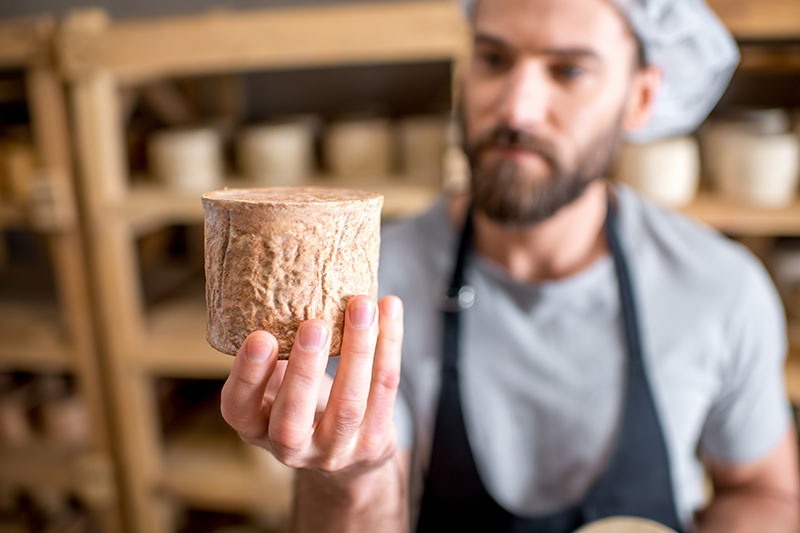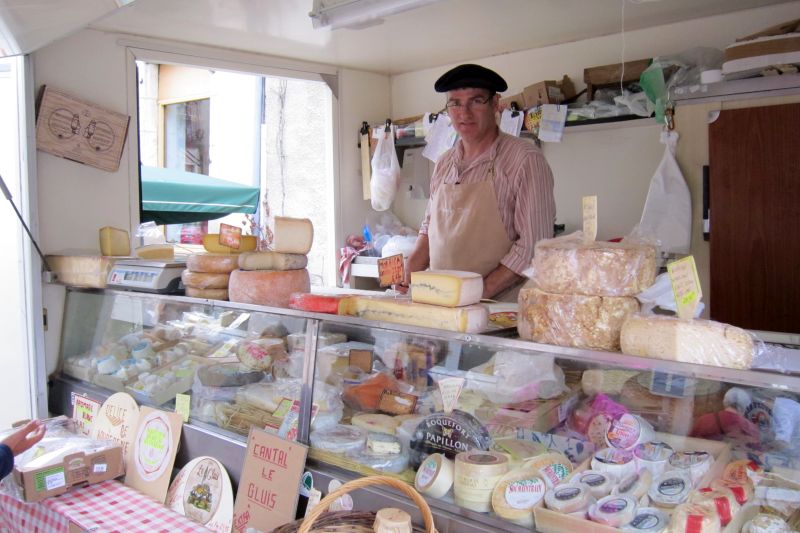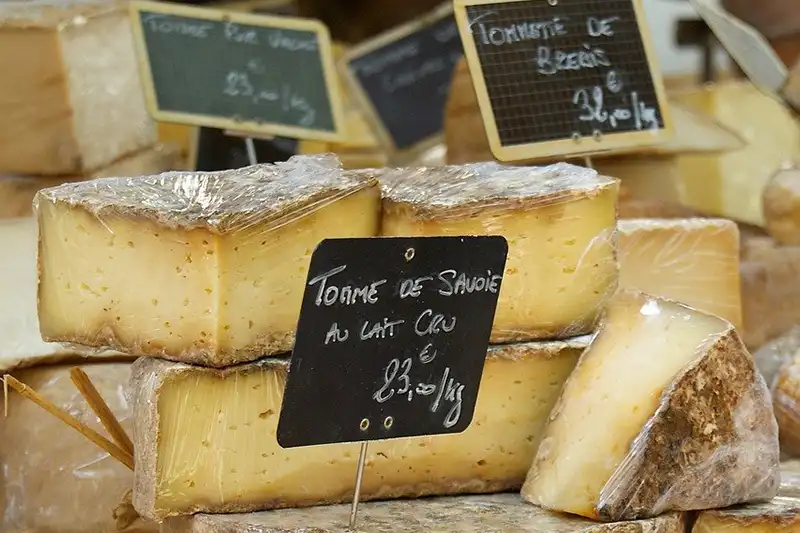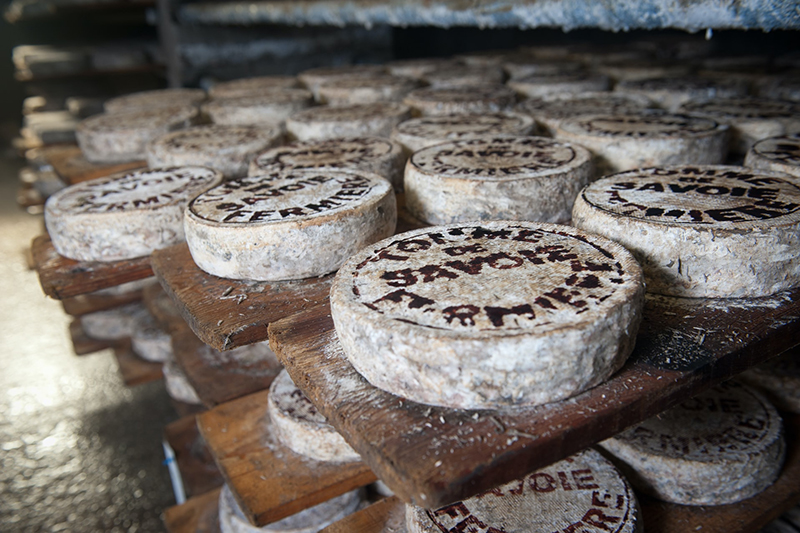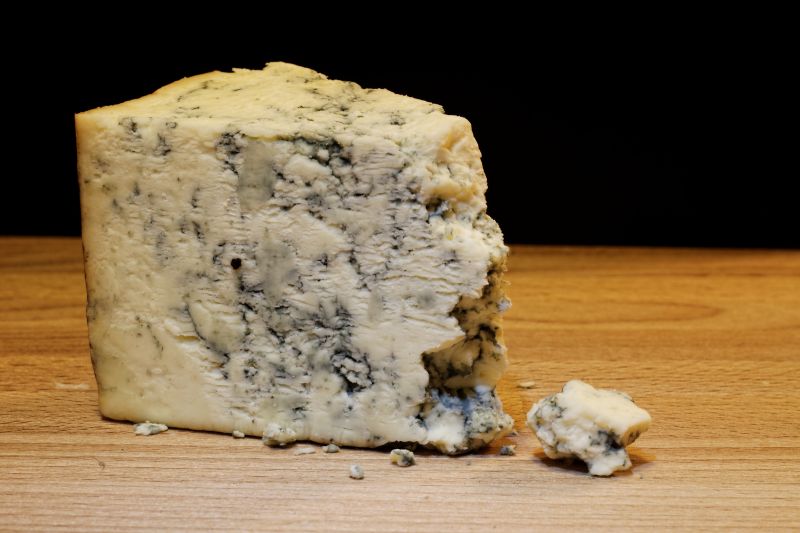Who consumes the most cheese in the world?
It may come as no surprise really, with so much choice available, the French are also the largest consumer of cheese in the world. Last year, the French consumed 27 kilos, or 58 pounds, per person! Italy and Germany vie for second place.
How should you categorise cheese?
Among the thousands of varieties of cheese, we can in fact narrow them at least into categories of types. It’s not as simple as hard or soft cheese. Though that is probably the easiest way to narrow a very wide field. In fact, there are considered to be 6 different types.
Two are based on the rind, the outside skin if you will. Bloomy rind and washed rind, both of which refer to soft cheeses. Bloomy rind is a variety of cheese covered in penicillium, giving it a white, downy look. The washed rind on the other hand is washed and brushed multiple times to give it a more pronounced flavour and a shiny, smooth yellow colour.
Then we have the pressed cheeses. These fall into the harder cheese variety. They are designated by either cooked or uncooked. Uncooked tend to be aged less than the cooked cheeses and so are usually slightly softer.
‘Uncooked’ should not be confused with ‘unripened’ which is another type. This is fairly explanatory in that the cheese is not aged, and so there is no maturing period. This type is reserved for the likes of fromage frais or blanc: a very soft almost yoghurt-like cheese.
Our last two types are blue cheese and goat’s cheese. The first is unique in that it is made from fermented curd that mould develops in, giving it those blue veins. Think Roquefort. Whilst goat’s cheese is very obviously made from goats. In France, it is a soft cheese usually with a bloomy style rind.
Can you bring unpasteurised cheese back to the US, Canada, or Australia?
If you cruise with us in France, you will have the opportunity to try many cheeses. Both lunch and dinner typically offer a taste of 2 to 3 cheeses. Each unique and different, showcasing the different types and thus regions.
But don’t let the wonderful selection overwhelm you! Taste, taste, taste. Due to laws about unpasteurised cheese in the US, Canada, and Australia, it’s unlikely that you’ll have the opportunity to try these cheeses at home.
One of the key factors contributing to the uniqueness of French cheeses is the use of raw milk. There may be a version of a French cheese found at home, such as brie, camembert or roquefort, but it will not taste the same or have quite the same quality and uniqueness of flavour as those you can taste whilst in France.
What is an AOC?
Under AOC regulations many French cheeses are required by law to use raw milk. What then is an AOC? An abbreviation of the French term ‘Appellation d’Origine Contrôlée’ or ‘Protected Designation of Origin’, iIt was established in France in the year 1411 with the intention of safeguarding certain special agricultural goods like cheese, wine, and butter, even lentils and lavender.
One of the primary reasons France is renowned for its cuisine is the long tradition of the AOC regulations. Similar regulations have now expanded to other European nations where it is referred to as the PDO, or ‘Protected Designation of Origin’. In essence, it guards artists and/or distinctive goods against imitators who would be unable to produce them just as well or more importantly, to meet a consistent standard.
Why is it impossible to replicate? Because a large portion of the AOC classification is based on the local raw materials, soil, climate, and even storage practices—all of which combine to create a unique product. Hence incapable of being duplicated elsewhere. You may be most familiar with this concept when it comes to Champagne.
French Cheese and AOC
In France, cheese is most often associated with a town, much like wine. Burgundy’s époisses town is the source of époisses cheese. Aged in the caverns of Roquefort-sur-Soulzon in southern France, is the more well-known roquefort. (Also a good stinky cheese when extremely mature.) Normandy’s camembert comes from Camembert. Getting the picture?
A rather uncommon one, although not the only one, is the well-known brie. In reality, it is a region that is located immediately outside of Paris and includes a number of towns named after brie. There are two towns in this area, Brie de Meaux and Brie de Melun, which have the French AOC.
Brie cheese from these two towns is unpasteurised. However, Brie from the region outside of these two towns, is not designated AOC so a cheese maker can choose whether to pasteurise or not. These are the cheeses that you might enjoy in say the US, Canada and Australia.
Is French cheese good for you?
One thing you may note if you visit a market or supermarket in France is the lack of fresh milk. When it comes to getting your calcium in France, cheese is the go-to source instead. Cheese is richer in calcium, as well as other vitamins and nutritional proteins. And with such wide diversity, there is always a favourite to be found for any age or preference.
In researching French cheese, there is something called the French Paradox. Essentially it is the study of the French diet, which includes fairly significant amounts of wine and cheese i.e. alcohol and saturated fats. However, in France this has not resulted in higher rates of mortality due to the likes of heart disease.
You may know this as the ‘small glass of red wine a day is good for you’ concept. This result from studies determining antioxidant properties in wine. And more recent studies have found that French cheese too contains good health properties. There is something called alkaline phosphatase which reduces gut inflammation, and possibly aids cardiovascular health. However for this property to be active, it requires the cheese be unpasteurised.
Which French cheese can you cook with?
Now if we are going to delve into French cheeses we can’t overlook the famous or well-known cheese dishes in France. Of course, one can simply enjoy a cheese board or cheese course. But French cheese is also equally enjoyed, if not more so, cooked in a variety of recipes.
A firm favourite is the gougere. A usually small puff pastry ball that adds a hint of comté cheese. Most often served as a perfect accompaniment to a glass of champagne. Along the same poofy pastry idea, there is of course the cheese soufflé. Supposedly invented in the 18th century, today it tends to come served in little individual portions.
The classic quiche must have a mention: a savoury dairy-laden tart of gruyère, camembert or roquefort cheese mixed with eggs, milk and crème fraîche. This is a staple dish of restaurants, bistros and boulangeries (bakeries).
The ‘Croque Monsieur’ is the French take on the ham and cheese sandwich. But of course, this is France, so it is no ordinary sandwich! There is a bechamel sauce involved, and well, let us say if you sit yourself in a café and order this, you will never look at a boring ham and cheese sandwich the same way every again.
One should also mention fondue. Certainly the Swiss invented it, but one would argue the French perfected it. Head to the Jura or Savoie regions of France in particular, for their versions of this classic staple of the French Alps. Fondue Jurassienne is made with comté cheese, whilst savoyarde with a combination of gruyère, beaufort, emmental, and comté.
Should you refrigerate cheese?
First, it’s important to realise that in general cheeses are not refrigerated in France (not good ones at least) thanks to the generally cooler climate. Kept under cover on a cheese plate with a dome, sure. Or even a fromager – a cheese preserver which looks like a mesh box with shelves inside. The mesh allows air to circulate around the cheeses which are stored inside, away from insects and rodents. The fromager is stored in a cool dark place. But not a fridge.
Why does cheese smell?
It would be remiss of me if I didn’t make mention of stinky cheeses from France. After all, so often when we think of French cheese this is what comes to mind. Or at least what is bandied about. But where does this stereotype come from?
Technically it is a chemistry process that makes some cheeses pong. Softer cheeses utilise a bacteria called Brevibacterium linens, which maybe unsurprisingly is also the cause of body odour. Brevibacterium linens is a moisture-loving bacteria, which is why creamier, moister cheeses tend to smell stronger than hard cheeses.
Chilling cheese changes the chemistry, the consistency and even taste to you and I. Like wine, cheese is meant to be partaken at its optimum temperature, and ripeness.
For soft cheeses this is particularly true with brie, camembert, and époisses which should be almost running off the plate on their own! And with ripeness comes le whiff. Embrace the whiff and I promise you your French cheese will taste, even more, amazing.
For you cheese lovers, here’s more from our Ships Log
Savour French cheeses on a luxury barge cruise
During our hotel barge cruises in France, guests have the opportunity to sample some of the finest cheeses that France has to offer. Along with the wine selection on board, our knowledgeable hosts will take the time to describe the history and tasting notes of each chosen cheese, before serving it alongside a hand-picked vintage: food for thought as well as the tastebuds!
 French
French
 English
English Spanish
Spanish German
German Norwegian
Norwegian Portuguese
Portuguese Swedish
Swedish Italian
Italian Russian
Russian Simplified Chinese
Simplified Chinese Japanese
Japanese
